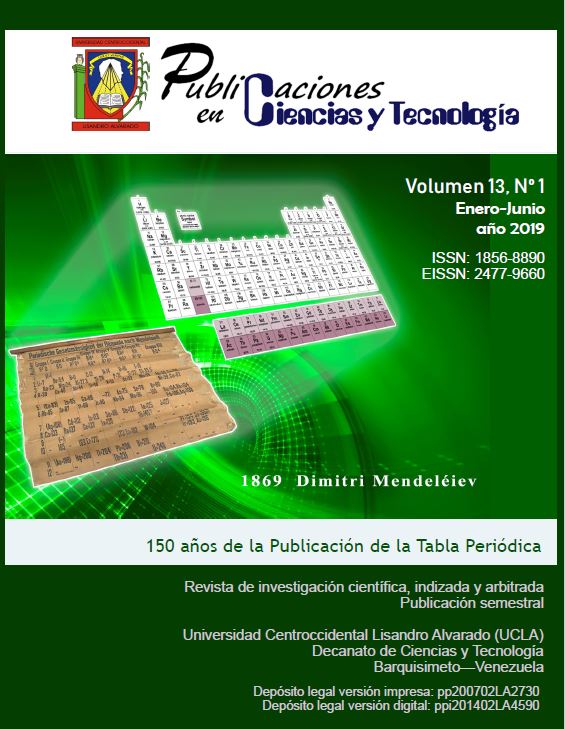Evaluation of the efficiency of the growth of the cereal industry in America by applying Data Envelopment Analysis
DOI:
https://doi.org/10.13140/RG.2.2.19956.71044Keywords:
cereal industry, data envelopment analysis, DEA, América, industria de cerealesAbstract
The technical efficiency for the cereal industry is conceived as an achievement when it is produced or obtained as much as possible from the available inputs. Efficiency analysis is presented through the application of Data Envelopment Analysis to eleven (11) markets of cereals in America for the corn, rice and wheat sectors in order to determine the technical efficiency in terms of projection or growth of each of them in the grain bag from cereal production, yield and exports. The indicators of the World Bank are used, where the agricultural factor of all the countries is related to global economic growth. It is obtained that the countries with high efficiency (100%) are Bolivia, Brazil, Costa Rica, and the Dominican Republic, being markets with production volumes less than 30MM. This analysis shows that the technical efficiency of the countries that are leaders in the grain market such as the US and Argentina are not technically efficient, presenting values of 86.8% and 39.3% respectively; and Chile with 4.2%. The most representative variables within technical efficiency are cereal production (64%) followed by exports (24%).
Downloads
References
Organización de las Naciones Unidas para la Alimentación y la Agricultura (FAO). Situación Alimentaria Mundial, 2018. OnLine
Organización de las Naciones Unidas para la Alimentación y la Agricultura (FAO). Oferta y Demanda de Cereales, 2018. OnLine
Oficina de Estudios y Políticas Agrarias (ODEPA). Boletín de Cereales, 2018. OnLine
M.Torres; C.Vásquez. Estudio de sensibilidad de la eficiencia de la calidad percibida del servicio en empresas del sector eléctrico usando DEA. II Simposio Internacional de Ingeniería Industrial: Actualidad y Nuevas Tendencias 2008. V Jornadas de Productividad, Calidad e Innovación. Universidad de Carabobo, Valencia, Venezuela. pages 5, 2008.
J. Prokopenko. La gestión de la productividad. Manual práctico. Ginebra. Organización Internacional del trabajo, 1989.
G. Souto. Mercado Internacional de Granos: características principales, trayectoria reciente y articulación con el mercado local. Montevideo. pages 28-30, 2013. OnLine
J. Schermerhorn. Administración. Ed. Limusa. México, 2006.
M. Masana. Desarrollo sobre las exigencias sobre calidad e inocuidad de alimentos en el mundo, 2025. Ministerio de Ciencia, Tecnología e Innovación Productiva. Buenos Aires. Page 65. 2015.
M. Farrell. The measurement of productive efficiency. Journal of the Royal Satistical Society. Series A (General), 120 (3):253-281, 1957.
O. Blasco; V. Coll. Evaluación de la eficiencia mediante el análisis envolvente de datos. Universidad de Valencia, España, 2006.
J. Aparicio. Una Introducción al Análisis Envolvente de Datos. Centro de Investigación Operativa Universidad Miguel Hernández de Elche, 2007. OnLine
I. Guzmán; C. De Nieves; A.Briones. Evaluación de la eficiencia en el sector de los agronegocios en España: un estudio empírico para la región de Murcia. Cuadernos de Desarrollo Rural, 10(71):81-100. 2013. OnLine
C. Medina. Eficiencia técnica-económica y riesgo en la producción del cultivo de arroz. Trabajo de grado Universidad de Bío-Bío. Chile, 2014. OnLine
F. García. La metodología Análisis Envolvente de Datos (DEA): una aplicación a la producción de arroz en Uruguay. Agrociencia Uruguay, 20(1):99-112, 2016. OnLine
M.Torres; F. Ayvar; J. Navarro. La eficiencia de la industria de alimentos, bebidas y tabaco: un análisis a través de la envolvente de datos. Revista Nicolaita de Estudios Económicos, 8(1):29-52, 2018. OnLine
N. Cadenas; B. López. Evaluación de la eficiencia de morteros de revestimiento con aditivos reciclados aplicando Análisis Envolvente de Datos (DEA). Publicaciones en Ciencias y Tecnología, 12(1):33–41, 2018.
R. Banker; A.Charnes; W.Cooper. Some models for estimating technical and scale efficiencies in data envelopment analysis. Management Science, 30(9):1078–1092, 1984.
Banco Mundial. Indicadores de Desarrollo Mundial, 2018. OnLine
Published
How to Cite
Issue
Section
The opinions expressed by the authors do not necessarily reflect the position of the publisher of the publication or of UCLA. The total or partial reproduction of the texts published here is authorized, as long as the complete source and the electronic address of this journal are cited.
The authors fully retain the rights to their works, giving the journal the right to be the first publication where the article is presented. The authors have the right to use their articles for any purpose as long as it is done for non-profit. Authors are recommended to disseminate their articles in the final version, after publication in this journal, in the electronic media of the institutions to which they are affiliated or personal digital media.



